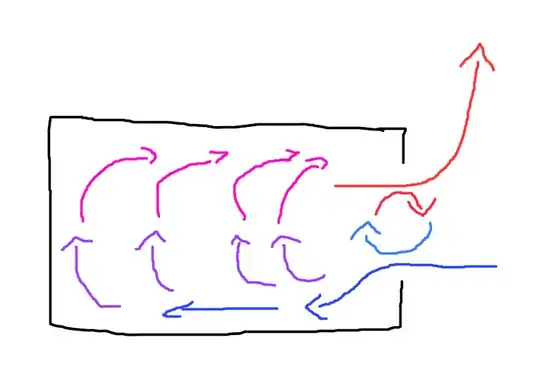It's getting colder where I live (~40 degrees Fahrenheit). The place where I live (college dormitories) pumps the heat up into the 80's, so I keep the windows open most of the time. I noticed that, when I open both windows, the room seems to cool down very quickly and stays cold. When there is only one window open, though, the room stays relatively warm, and doesn't cool down nearly as fast. There is nothing particularly different about the windows: they are the same shape, and the room is symmetric about the line between the windows (it's a rectangular room, with the two windows on the far wall). I am wondering if there is any sort of physical reason for why the room seems to cool over 2x as fast, and stay at least 10-15 degrees colder (maybe more) when both windows are open instead of just one being open. A naive initial assumption would have someone assume that if you opened both windows instead of one, the room would cool roughly 2x as fast as it would with just one window open, but it seems to be far more than this. Any ideas or solutions would be appreciated.
2 Answers
Any appreciable macroscale heat transfer in a fluid (like the air in your room) occurs through convection. A reasonable hypothesis is that the room air remains fairly stagnant with only one window open but starts to mix appreciably with the second window open; this would essentially “turn on” substantial convective cooling in a nonlinear way.
What happens if you open only the second window? An alternate hypothesis is that building features funnel a breeze more effectively through that window.
Is the hallway somewhat open to the outside air? What happens if you open one window and a door?
- 30,163
Hot air is less dense than cold air, thus hot air rises. You could say hot air "floats" on top of cold air. But the difference in density is quite low: consider ideal gas law: pV=nRT. T is expressed in °K, so the difference in density between 25°C air and 15°C air corresponds to 298°K/288°K, a 3.5% difference in density. So the forces and accelerations involved will be tiny.
As a general rule, if you want convection to result in strong air currents, you need large temperature differences and/or something shaped like a chimney. A room with a window is the opposite.
Let's draw a room (black box) with one open window (hole):
Hot air inside rises and exits via the top of the window. Cool air from outside enters through the bottom of the window and sinks down into the room. And then... convection would stop, because we'd have stratified air in the room, with cool air at the bottom and war air on top.
What actually happens is the cool air that entered the room takes up heat from the furniture, floor, walls, etc. Once it is hot enough, it will rise, keep sucking heat out of the ceiling, and exit through the top of the window. So you have a convection current, which is powered by the temperature difference between solid objects in the room and outside air. Heat transfer between solid objects and air is pretty slow unless they're designed for this purpose, so the power available to move the air will be pretty low. So it's not effective. I represented this by changing the color of the arrows.
In addition, because air flows in the same window in both directions, there will be turbulence in the center, restricting flow. Thus a tall window works better: more pressure difference between top and bottom, and more effective area to move air.
If you have two windows then the slightest breeze is going to overpower this and result in much higher airflow.
Note if your building management is insane and sets the heat to 25°C, and the radiators don't have any means of adjustment, then much more energy efficient way to solve the problem is to cover the radiators with blankets. Don't do this with electric or gas radiators obviously, but with hot water radiators it works absolutely fine.
- 1,254
